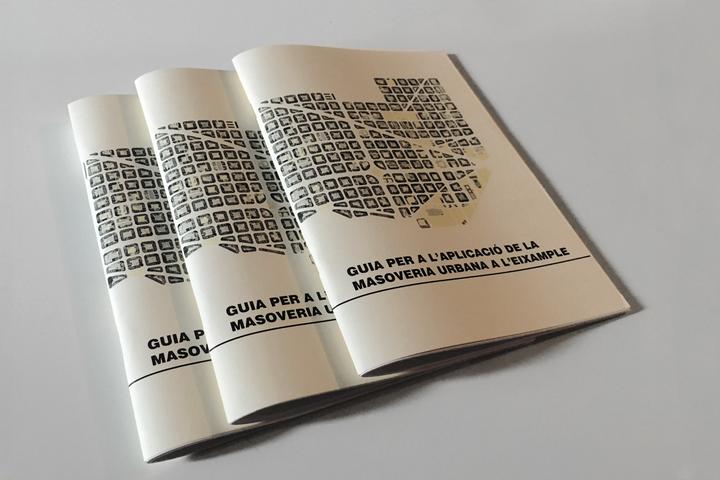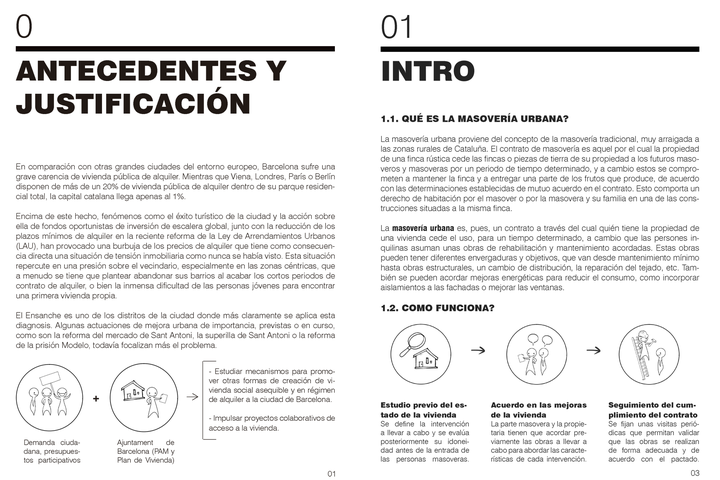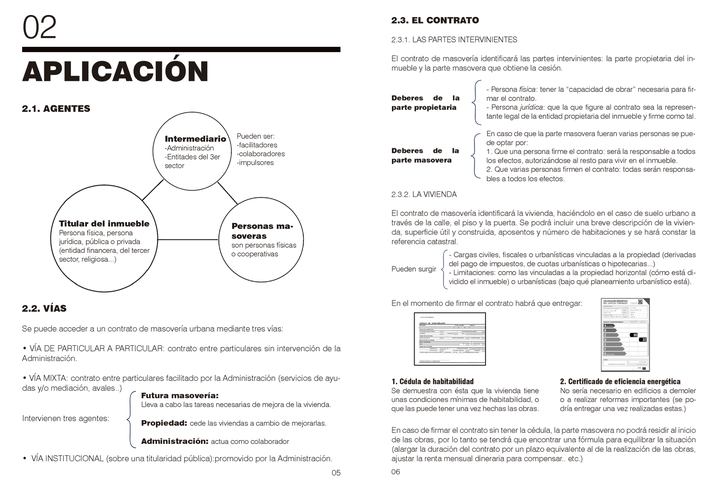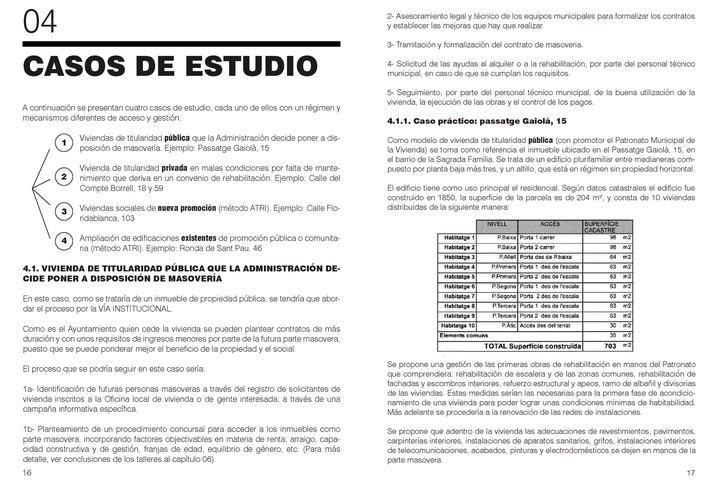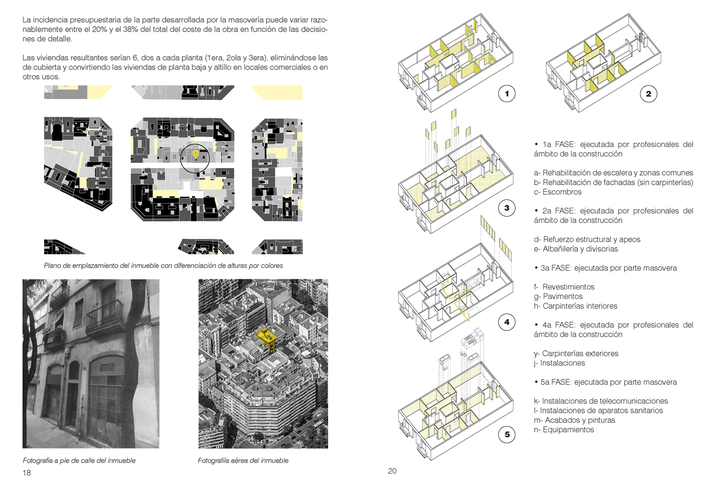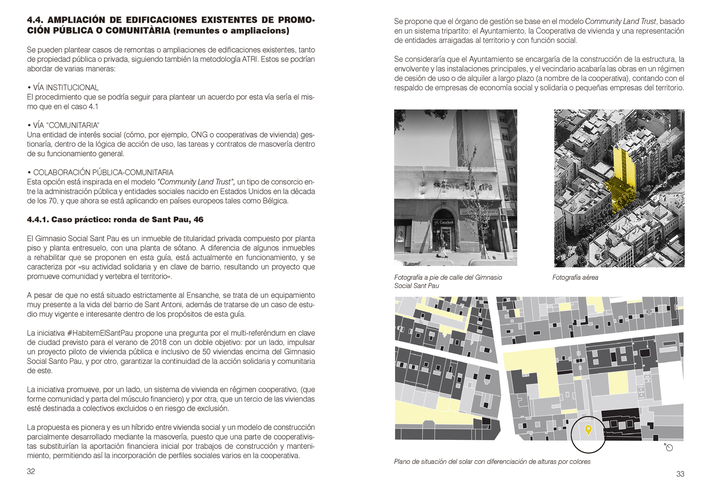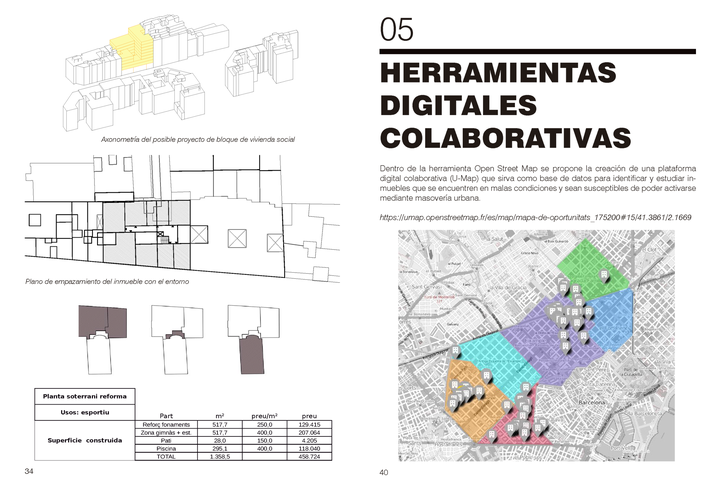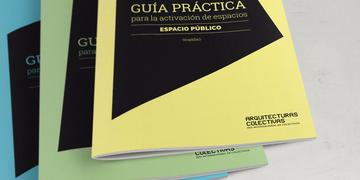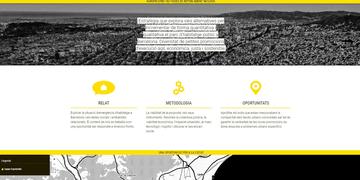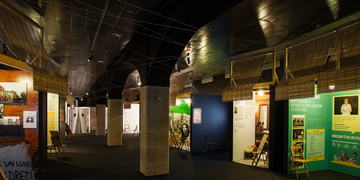GUIDE TO ALTERNATIVE HOUSING MODELS IN THE EIXAMPLE NEIGHBORHOOD
Through models and case studies, actions are proposed in different situations: “urban sharecropping” (masoveria urbana) in new construction, reactivations of disused flats, rehabilitations. The guide is the result of the coordinated work of the editorial team (Straddle3 among them), technicians of the Eixample district, associative fabric and citizens who promote the idea and the project.
In comparison with other large European cities, Barcelona suffers from a serious lack of public rental housing, barely reaching 1%. The phenomena such as the touristic success of the city and the actions of opportunistic investment funds of global scale are added to this, together with the reduction of the minimum terms of rent in the recent reform of the Law of Urban Leases (LAU).
This has led to a rent price bubble that has resulted in pressure on the neighborhood, especially in the central areas, in which citizens have to often consider leaving their own neighborhood when the rental contracts end, or the immense difficulty that young people face trying to find a first home of their own.
Eixample is one of the districts of the city where this diagnosis is most clearly applied. Some actions of urban improvement of importance, planned or in progress, such as the reform of the Sant Antoni market, creating the "Superilla" of Sant Antoni or the reform of the Modelo prison, creates a larger problem.
All this leads to maximize the investigation of strategies of actions to obtain housing goal to allocate to social policies, conventional or not. They are from the private sector through purchase or agreement, either by accelerating the promotion of new construction (e.g. with new construction systems) or by activating buildings that have not been depleted to public facilities.
Given the complexity of the problem, with the different agents involved in the process of defining the assignment, it has been agreed to focus on the feasibility of implementing “urban sharecropping” agreements in the district. This, formally, focuses on three areas:
- The detection and characterization of some real opportunity cases, or case studies, that serve to contrast the application of the “urban sharecropping” model in different environments, including the reactivation of existing buildings and the application of the model on new work.
- The drafting of a report on the legal status of conservation orders to enforce their implementation, with the aim of promoting rehabilitation agreements with private owners, which may become “urban sharecropping” projects.
- The drafting of this guide, which finally also includes the dossiers explaining the case studies that have been worked on during the process.
-
Guide in Spanish
https://lisabo.maadix.org/owncloud/index.php/s/3luvaqjc093MLWI#pdfviewer -
Guide in catalan
https://lisabo.maadix.org/owncloud/index.php/s/ZbEbMZD6E07qFY9
-
Guide in catalan laguage [8.7 MB]
Guia per l'aplicació de la masoveria urbana a l'Eixample

